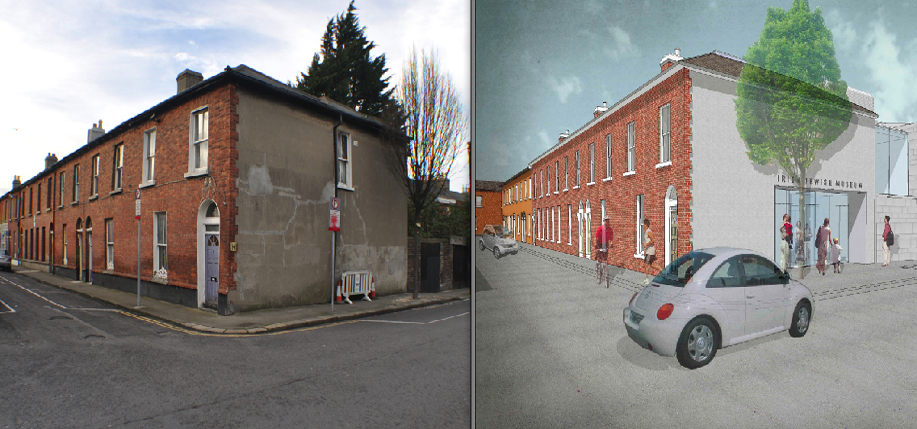The names of the most prominent figures of Jewish-Irish history are well known. James Joyce’s Ulysses follows the Dublin meanderings of its Jewish protagonist, Leopold Bloom. Robert Briscoe, the first Jewish Lord Mayor of Dublin, became a celebrated figure both in Ireland and abroad, and his sons, Joe and Ben, carried on his legacies in the military and in politics. But, as a small museum in Dublin’s Portobello neighborhood proves, there is all that and more to learn and celebrate about the two cultures.
Since its founding in 1985, the Irish Jewish Museum has educated visitors of all faiths and nationalities about the rich history of the Jews in Ireland, from the first mention of Jewish traders in the 1079 Annals of Innis, to William Ayers, who became the first Jewish Lord Mayor of Cork in 1550, to Irish-born Chaim Herzog, the sixth president of Israel. But with the majority of the museum’s exhibits in storage, and with its 10,000 visitors a year – a large portion of which include school groups – crowded into the museum’s limited space, plans are now under way for a much-needed expansion.
Speaking by phone from their home in Co. Kildare, former Lord Mayor of Dublin and Dáil senator Ben Briscoe and his wife, Carol, outlined the importance of the museum and its strong need of support – not just from those in Ireland, but also from Irish and Jewish ex-pats around the world.
Portobello, sometimes called Dublin’s Little Jerusalem, was once the heart of the Jewish community in Ireland. “Every second house in the area was Jewish,” said Carol, who helps archive the museum’s collection of historic and religious documents, cultural artifacts and educational displays. “There was a little prayer room on nearly every street, and the one where the museum is became very popular, so they built a synagogue.”
The Walworth Road Synagogue, as it was called, ceased functioning as a place of worship in the ’70s, as the majority of Jews in the area had moved farther into the suburbs. The synagogue became the home of the Irish Jewish Museum, which Carol says was lovingly built up by its curator, Raphael Siev.
Before his death in 2009, Siev purchased the three adjoining houses and bequeathed them to the museum, to ensure its expansion. Taoiseach Enda Kenny has declared his support for the plan, citing the museum as “a significant resource in the cultural life of the [Irish] State,” and commending its key role in Holocaust education and the government’s anti-racism program. The Irish government’s Office of Public Works has drawn up a comprehensive plan for the museum’s new home, which will feature a library with research and archival facilities, a conference hall for lectures and workshops, and expanded exhibition space dedicated to Irish and Jewish history, life, arts and culture.
Briscoe, who retired from a 37 year career in politics in 2002, on his late father’s advice that “it is far better to know when it is time to go than have people decide for you,” is acting as an unofficial ambassador for the museum, drumming up support at home and abroad. He shared that the expansion plans were met with great enthusiasm at an event at the Irish Consulate in New York in late May. “I have great interest in what we’re trying to achieve, and I am hopeful that once we get seed money, we can get going on some serious fundraising. There is considerable work ahead,” he said.
The museum has just embarked on the journey towards reaching its fundraising goal of $13 million, which will cover the expansion and lay the brickwork for funding the museum’s continued operation, as admission is free.
The Briscoes both emphasized the importance of the museum in contemporary Ireland. The Jewish population increased significantly in the late 19th and early 20th centuries, when many Jews fled to Ireland to escape the Russian pogroms. The community reached its peak of around 5,500 in the mid-1900s, but has since declined to a little over 1,000, due to general trends of immigration and because many move elsewhere in order to marry within the faith. Between the dispersion of what was once a strong community and Ireland’s increased multiculturalism, the Briscoes believe now is the time to fully commemorate and share the story of the Jews in Ireland.
“The Jewish community got on very well with the Irish people and became as Irish as anyone else. They had no difficulty, no confusion between their religion and their nationality, as such. The history of the Jewish people and their experience in Ireland is integral, and it would be a dreadful thing to lose that,” Briscoe said.
“It’s very important that this museum should continue; it’s the only museum of its kind,” Carol added.


I’m happy to forward a small donation and post this appeal to my Facebook page. What is the best way to send a donation from the US?
Sincerely,
Leah Beall Eisen
This seems to be the museums support page: http://jewishmuseum.ie/support-us/